Barriers to Learning: How to Identify and Overcome Learning Obstacles
Discover common barriers to learning and practical strategies to overcome them. Learn how to identify cognitive, emotional, and environmental obstacles affecting students.


Discover common barriers to learning and practical strategies to overcome them. Learn how to identify cognitive, emotional, and environmental obstacles affecting students.
Barriers to learning are the obstacles that prevent students from fully engaging with the curriculum and achieving their potential. These barriers can stem from a wide range of factors, including cognitive, emotional, social, and environmental influences. Whether a student faces personal learning barriers, such as a lack of confidence or motivation, or common barriers like language difficulties or limited access to resources, these challenges can significantly impact both lifelong learning and academic progress.
For head teachers and classroom teachers, understanding and addressing these barriers is essential to fostering an inclusive and accessible learning environment. Barriers can be broadly categorized into intrinsic (internal to the learner) and extrinsic (external factors influencing the learner):
To create , schools must adopt ‘inclusive by design’ approaches, strategies that proactively remove obstacles and ensure all learners can access the curriculum equitably. In this article, we will explore:
| Aspect | Intrinsic Barriers | Extrinsic Barriers |
|---|---|---|
| Definition | Originate within the learner | Arise from environmental or social factors |
| Examples | Dyslexia, ADHD, autism, anxiety, depression | Poverty, lack of resources, trauma, language barriers |
| How identified | Assessment, observation, specialist referrals | Family communication, home visits, pastoral support |
| Key interventions | Differentiation, multisensory teaching, 1:1 support | Resource provision, pastoral care, family liaison |
| School role | Reasonable adjustments, SEND support plans | Safeguarding, community partnerships, wraparound services |
By understanding and addressing these barriers, schools can ensure that every child has the opportunity to thrive, building a foundation for lifelong learning and success.
To acknowledge barriers to learning and reduce learning challenges, it is vital to identify the barrier to learning as soon as possible, even before the child reaches school age. An important factor to be taken into consideration while identifying the barrier to a student in the learning environment is to use different ways of identification. Here are ways to identify a barrier to learning:
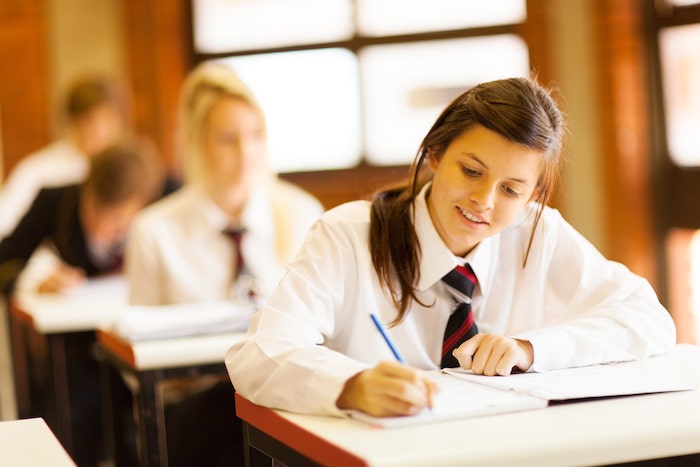
The environment around us plays an important role in reducing or increasing the common learning barriers. In the following area we can face barriers to learning:
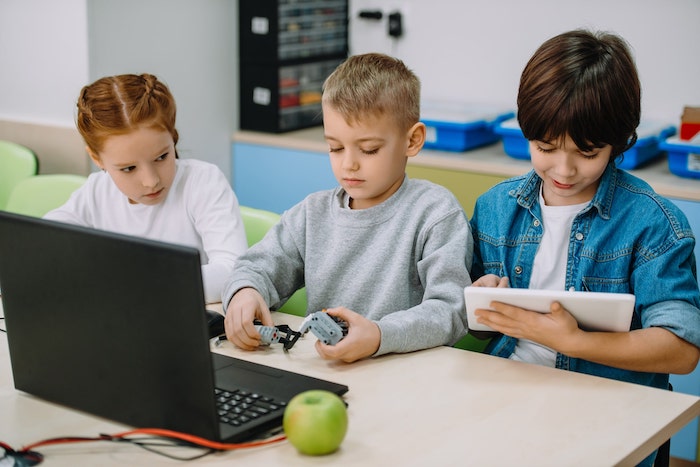
Teachers can break down learning barriers by first identifying specific obstacles through observation, assessment data, and student interviews. Then implement targeted strategies like providing think time, using multisensory instruction, and creating inclusive classroom designs that proactively address diverse needs. Regular monitoring and adjustment of these strategies ensures all students can access the curriculum effectively.
Classroom teachers are presented with complex problems on a daily basis. Quite often, these barriers are linked and it takes careful unpicking to understand how they affect one another. At Structural Learning, we regularly run training sessions that encourage this diagnostic practice. On a recent training course, we facilitated a session that involved linking classroom problems. This helps educators reframe the issues and eventually arrive at the essence of the need. Obviously, time pressures can hinder these types of activities but the following ideas should help your school examine access issues.
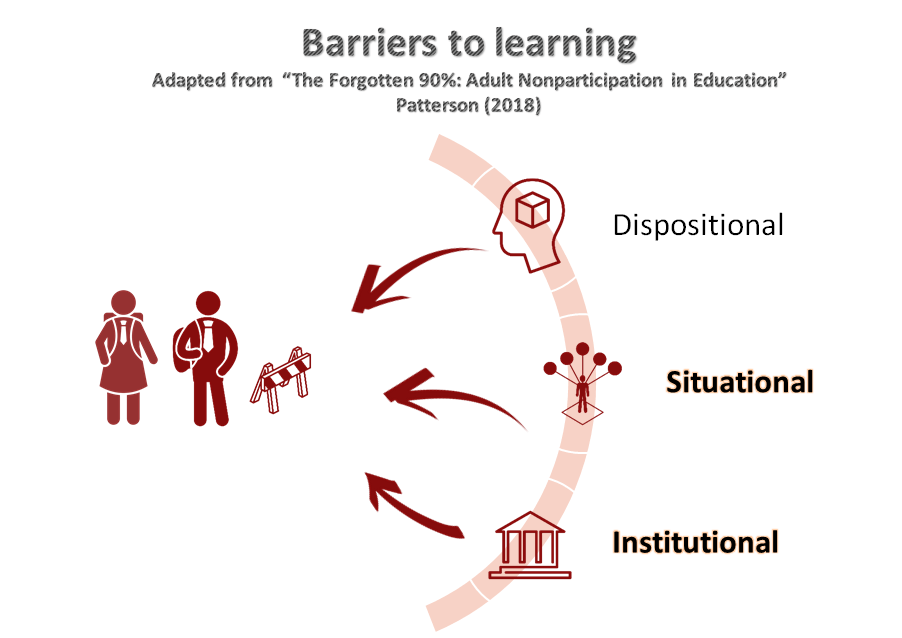
Address emotional and behavioral barriers by creating a supportive classroom environment with clear routines and expectations that reduce anxiety. Implement strategies like teaching self-regulation techniques, providing quiet spaces for emotional breaks, and building strong teacher-student relationships through regular check-ins. Partner with school counselors and families to provide consistent support across all environments.
Emotional barriers, such as anxiety, stress, and low self-esteem, can significantly impact a student's ability to learn and engage in the classroom.
Motivational barriers, including a lack of interest or feelings of inadequacy, further contribute to an emotional learning barrier. As teachers, it's crucial to recognize these challenges and develop strategies to address them.
Lack of focus and engagement can be symptoms of emotional and behavioral barriers. To tackle these issues, teachers should create a safe, supportive learning environment that encourages open communication and fosters positive relationships between students and educators.
This can help alleviate emotional distress and promote emotional well-being.
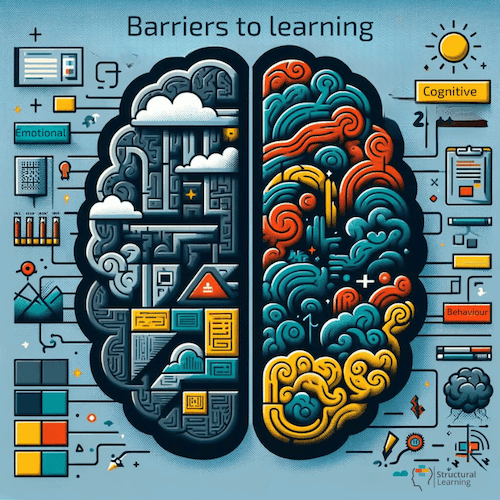
Additionally, educators should consider implementing (SEL) programs that teach students how to manage their emotions, build resilience, and develop healthy coping mechanisms. SEL programs have been proven to improve academic performance and overall mental health.
It's also essential for teachers to recognize that external factors, such as family issues or traumatic events, may contribute to emotional and behavioral barriers. By working closely with school counselors, psychologists, and social workers, teachers can develop individualized support plans to help students overcome these obstacles.
In conclusion, addressing emotional and behavioral barriers is crucial for enhancing student success. By fostering a supportive learning environment, implementing SEL programs, and collaborating with other professionals, teachers can empower students to overcome these challenges and reach their full potential.

Teachers can help students overcome language barriers by using visual aids, graphic organizers, and hands-on activities that support comprehension beyond verbal instruction. Implement peer support systems where multilingual students can help each other, and provide vocabulary pre-teaching before introducing new concepts. Use technology tools like translation apps and multilingual resources to ensure all students can access lesson content.
Language barriers are common obstacles faced by many students, particularly English Language Learners and . Teachers can use multisensory strategies to create inclusive classrooms and support the learning process for students who face these challenges.
Multisensory learning, which engages multiple senses simultaneously, has been proven effective in aiding comprehension and retention of new information.
Drawing on educational theories from Vygotsky and Piaget, multisensory learning emphasizes the importance of social interaction and cognitive development in the learning process. Teachers can incorporate visual techniques such as dual coding, which combines verbal and visual information, to help students better understand and remember complex concepts.
This approach has been particularly effective in supporting dyslexic learners who often struggle with traditional language-based teaching methods.
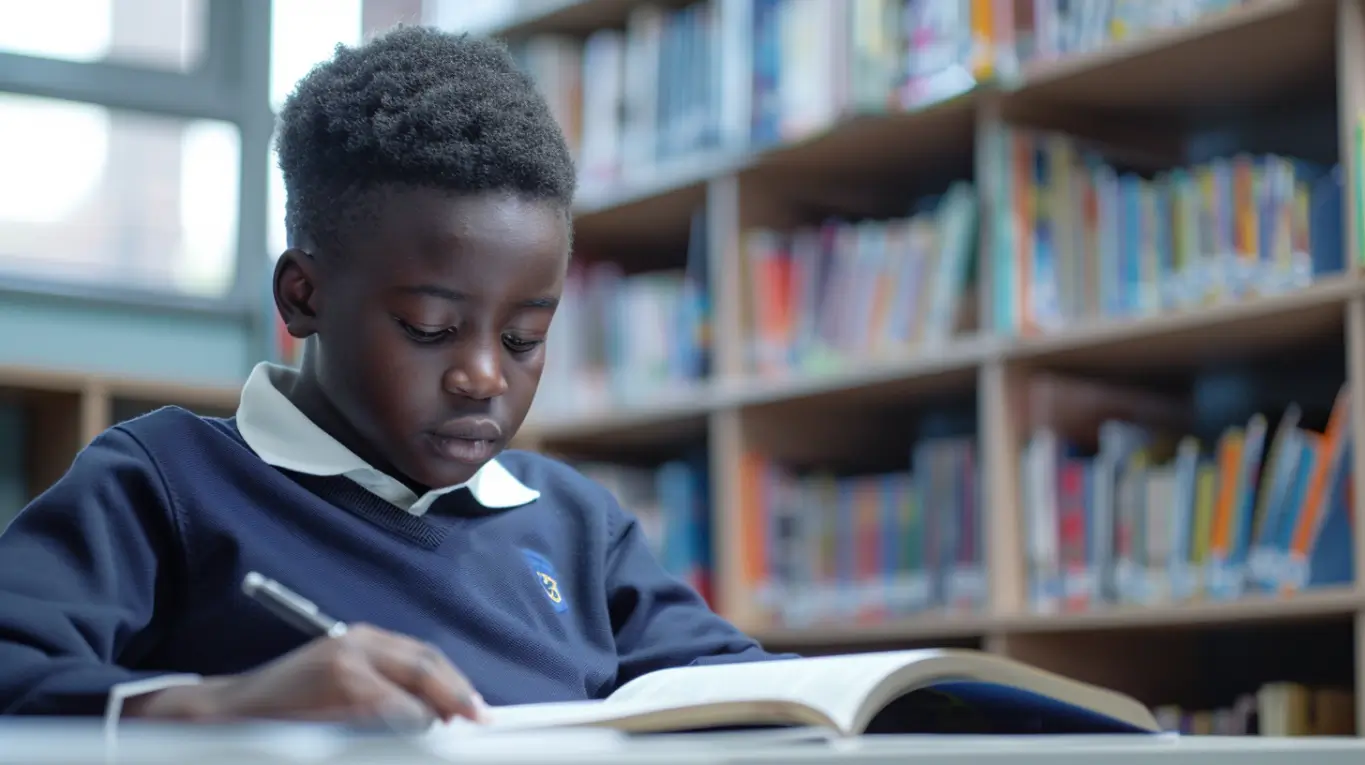
In addition to visual techniques, teachers can utilize auditory, tactile, and kinesthetic strategies to engage students in the learning process. For example, incorporating songs, chants, or rhymes can help reinforce new vocabulary and grammar rules.
Hands-on activities and movement-based exercises can further enhance language acquisition by providing opportunities for students to physically engage with the material.
By employing multisensory strategies, teachers can create more inclusive and effective learning environments for students who face language barriers. This approach not only supports language development but also fosters a deeper understanding of the subject matter, ultimately promoting academic success for all learners.
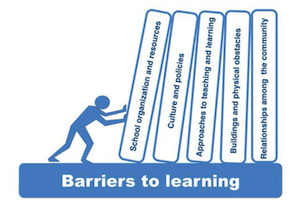
Identifying a barrier to student engagement is only the starting point. Classroom practitioners need practical strategies and resources to enable all types of learners to access the curriculum. Pending on the age of the student, a pupil might need a combination of the strategies below.
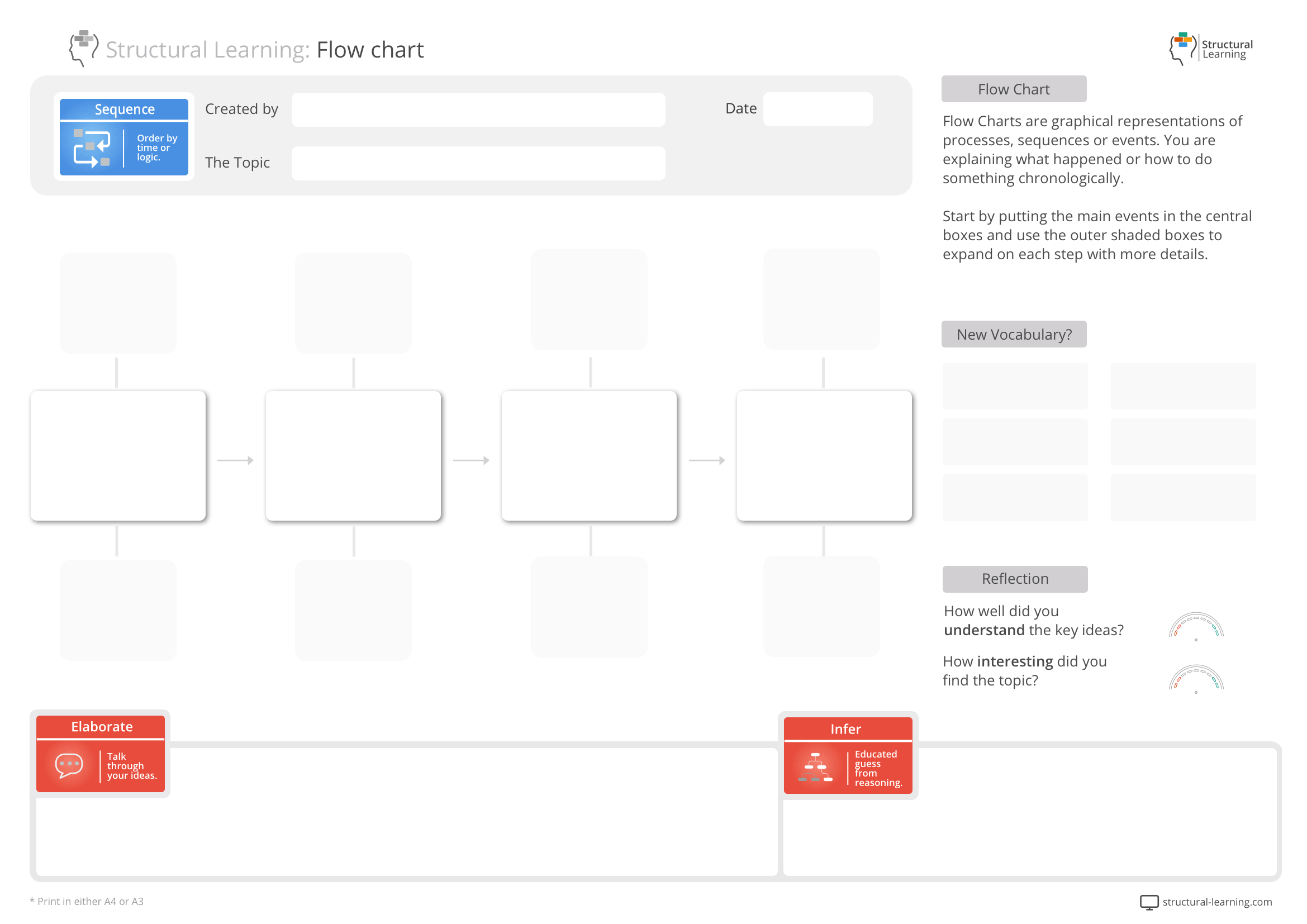
If you are interested in any of the concepts that have been mentioned in this article please do get in touch to discuss any requirements you may have. We have a range of resources and training options available to schools that are interested in revisiting their inclusion policies.
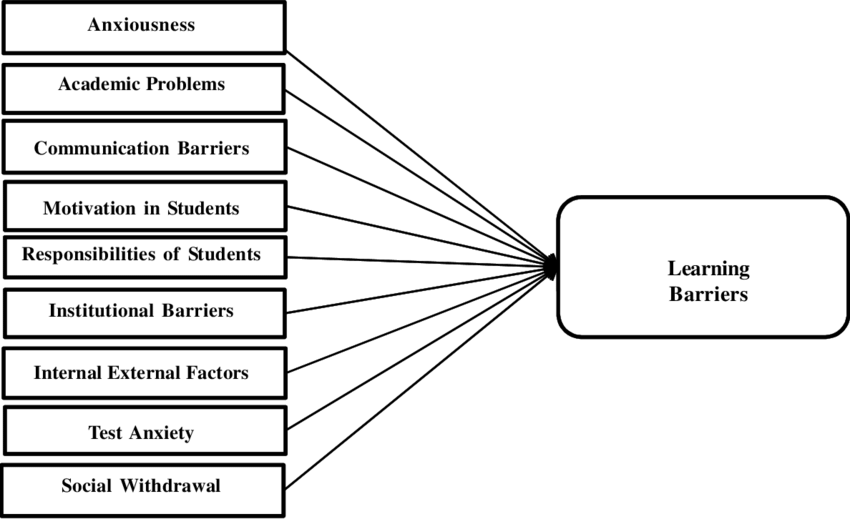
Current research shows that learning barriers often compound when not addressed early, with students facing multiple barriers experiencing significantly greater challenges. Studies indicate that inclusive classroom design and differentiated instruction can reduce barriers for up to 80% of students without requiring individual interventions. Research also emphasizes that addressing extrinsic barriers like poverty and resource access is equally important as supporting intrinsic learning difficulties.
The research literature suggests that these are some of the most commonly reported barriers to learning progress, affecting students across different educational settings. Barriers to learning can significantly hinder student progress and engagement. Based on empirical research studies, here are the top 10 most commonly reported barriers to learning, along with supporting studies.
1. Student Mental Health and Emotional Wellbeing
Issues like anxiety, depression, and low self-esteem negatively impact focus and motivation.
Source: Torabipoor et al. (2019), Found that students' depression and mental disorders were significant barriers to effective learning.
2. Teacher-Related Barriers
Teaching methods, lack of motivation, outdated knowledge, and inadequate teacher training hinder student understanding.
Source: Torabipoor et al. (2019), Highlighted that teacher skills, expression, and engagement directly impact student learning.
3. Heavy Workload and Assessment Pressure
Overloaded curriculums, frequent exams, and excessive homework contribute to student stress and disengagement.
Source: Hernandez (2017), Explored how high expectations and workload impact student achievement.
4. Lack of Parental Support and Dysfunctional Family Environments
Family instability, lack of encouragement, and socioeconomic challenges prevent students from succeeding.
Source: Lovette et al. (1998), Identified family-related issues as a key barrier to educational improvement.
5. Institutional Barriers (School Management & Policies)
Poor scheduling, overcrowded classrooms, and ineffective institutional policies make learning difficult.
Source: Grant (2016), Found that large class sizes, lack of student support, and poor administrative processes were key institutional barriers.
6. Cognitive and Learning Disabilities
Dyslexia, ADHD, and other learning difficulties impact student comprehension and academic progress.
Source: Hernandez (2017), Discussed how schools often fail to accommodate students with disabilities effectively.
7. Technology and Digital Learning Barriers
Lack of digital skills, unreliable internet access, and difficulties adapting to online learning hinder progress.
Source: Moncada-Rodríguez et al. (2022), Found that digital learning barriers, including lack of skills and family support, significantly impacted student success.
8. Language Barriers and Limited Literacy Skills
Non-native speakers, poor reading skills, and lack of access to quality educational resources limit academic success.
Source: Grujic & Krneta (2018), Found that language barriers, especially in IT-based learning, caused significant learning difficulties.
9. Lack of Student Motivation and Engagement
Low interest in learning, lack of purpose, and extrinsic motivation factors contribute to underachievement.
Source: Fazekas & Beck-Bíró (2021), Identified emotional security and lack of student engagement as major barriers in higher education.
10. Socioeconomic Barriers and Financial Constraints
Students from low-income backgrounds face challenges affording school supplies, transportation, and tutoring.
Source: Silva-Martínez et al. (2023), Found that financial barriers and lack of institutional support negatively impacted university student retention.
Essential resources include evidence-based guides from education authorities that outline identification strategies and intervention approaches for common learning barriers. Key texts focus on inclusive education practices, Universal Design for Learning principles, and specific strategies for supporting students with learning disabilities. Professional development materials that combine research findings with practical classroom applications provide the most valuable insights for educators.
These studies provide comprehensive insights into the diverse barriers to learning encountered by children with disabilities, including neurodivergent individuals, and offer perspectives on overcoming these barriers through various interventions and educational strategies:
Barriers to learning are the obstacles that prevent students from fully engaging with the curriculum and achieving their potential. These barriers can stem from a wide range of factors, including cognitive, emotional, social, and environmental influences. Whether a student faces personal learning barriers, such as a lack of confidence or motivation, or common barriers like language difficulties or limited access to resources, these challenges can significantly impact both lifelong learning and academic progress.
For head teachers and classroom teachers, understanding and addressing these barriers is essential to fostering an inclusive and accessible learning environment. Barriers can be broadly categorized into intrinsic (internal to the learner) and extrinsic (external factors influencing the learner):
To create , schools must adopt ‘inclusive by design’ approaches, strategies that proactively remove obstacles and ensure all learners can access the curriculum equitably. In this article, we will explore:
| Aspect | Intrinsic Barriers | Extrinsic Barriers |
|---|---|---|
| Definition | Originate within the learner | Arise from environmental or social factors |
| Examples | Dyslexia, ADHD, autism, anxiety, depression | Poverty, lack of resources, trauma, language barriers |
| How identified | Assessment, observation, specialist referrals | Family communication, home visits, pastoral support |
| Key interventions | Differentiation, multisensory teaching, 1:1 support | Resource provision, pastoral care, family liaison |
| School role | Reasonable adjustments, SEND support plans | Safeguarding, community partnerships, wraparound services |
By understanding and addressing these barriers, schools can ensure that every child has the opportunity to thrive, building a foundation for lifelong learning and success.
To acknowledge barriers to learning and reduce learning challenges, it is vital to identify the barrier to learning as soon as possible, even before the child reaches school age. An important factor to be taken into consideration while identifying the barrier to a student in the learning environment is to use different ways of identification. Here are ways to identify a barrier to learning:

The environment around us plays an important role in reducing or increasing the common learning barriers. In the following area we can face barriers to learning:

Teachers can break down learning barriers by first identifying specific obstacles through observation, assessment data, and student interviews. Then implement targeted strategies like providing think time, using multisensory instruction, and creating inclusive classroom designs that proactively address diverse needs. Regular monitoring and adjustment of these strategies ensures all students can access the curriculum effectively.
Classroom teachers are presented with complex problems on a daily basis. Quite often, these barriers are linked and it takes careful unpicking to understand how they affect one another. At Structural Learning, we regularly run training sessions that encourage this diagnostic practice. On a recent training course, we facilitated a session that involved linking classroom problems. This helps educators reframe the issues and eventually arrive at the essence of the need. Obviously, time pressures can hinder these types of activities but the following ideas should help your school examine access issues.

Address emotional and behavioral barriers by creating a supportive classroom environment with clear routines and expectations that reduce anxiety. Implement strategies like teaching self-regulation techniques, providing quiet spaces for emotional breaks, and building strong teacher-student relationships through regular check-ins. Partner with school counselors and families to provide consistent support across all environments.
Emotional barriers, such as anxiety, stress, and low self-esteem, can significantly impact a student's ability to learn and engage in the classroom.
Motivational barriers, including a lack of interest or feelings of inadequacy, further contribute to an emotional learning barrier. As teachers, it's crucial to recognize these challenges and develop strategies to address them.
Lack of focus and engagement can be symptoms of emotional and behavioral barriers. To tackle these issues, teachers should create a safe, supportive learning environment that encourages open communication and fosters positive relationships between students and educators.
This can help alleviate emotional distress and promote emotional well-being.

Additionally, educators should consider implementing (SEL) programs that teach students how to manage their emotions, build resilience, and develop healthy coping mechanisms. SEL programs have been proven to improve academic performance and overall mental health.
It's also essential for teachers to recognize that external factors, such as family issues or traumatic events, may contribute to emotional and behavioral barriers. By working closely with school counselors, psychologists, and social workers, teachers can develop individualized support plans to help students overcome these obstacles.
In conclusion, addressing emotional and behavioral barriers is crucial for enhancing student success. By fostering a supportive learning environment, implementing SEL programs, and collaborating with other professionals, teachers can empower students to overcome these challenges and reach their full potential.

Teachers can help students overcome language barriers by using visual aids, graphic organizers, and hands-on activities that support comprehension beyond verbal instruction. Implement peer support systems where multilingual students can help each other, and provide vocabulary pre-teaching before introducing new concepts. Use technology tools like translation apps and multilingual resources to ensure all students can access lesson content.
Language barriers are common obstacles faced by many students, particularly English Language Learners and . Teachers can use multisensory strategies to create inclusive classrooms and support the learning process for students who face these challenges.
Multisensory learning, which engages multiple senses simultaneously, has been proven effective in aiding comprehension and retention of new information.
Drawing on educational theories from Vygotsky and Piaget, multisensory learning emphasizes the importance of social interaction and cognitive development in the learning process. Teachers can incorporate visual techniques such as dual coding, which combines verbal and visual information, to help students better understand and remember complex concepts.
This approach has been particularly effective in supporting dyslexic learners who often struggle with traditional language-based teaching methods.

In addition to visual techniques, teachers can utilize auditory, tactile, and kinesthetic strategies to engage students in the learning process. For example, incorporating songs, chants, or rhymes can help reinforce new vocabulary and grammar rules.
Hands-on activities and movement-based exercises can further enhance language acquisition by providing opportunities for students to physically engage with the material.
By employing multisensory strategies, teachers can create more inclusive and effective learning environments for students who face language barriers. This approach not only supports language development but also fosters a deeper understanding of the subject matter, ultimately promoting academic success for all learners.

Identifying a barrier to student engagement is only the starting point. Classroom practitioners need practical strategies and resources to enable all types of learners to access the curriculum. Pending on the age of the student, a pupil might need a combination of the strategies below.

If you are interested in any of the concepts that have been mentioned in this article please do get in touch to discuss any requirements you may have. We have a range of resources and training options available to schools that are interested in revisiting their inclusion policies.

Current research shows that learning barriers often compound when not addressed early, with students facing multiple barriers experiencing significantly greater challenges. Studies indicate that inclusive classroom design and differentiated instruction can reduce barriers for up to 80% of students without requiring individual interventions. Research also emphasizes that addressing extrinsic barriers like poverty and resource access is equally important as supporting intrinsic learning difficulties.
The research literature suggests that these are some of the most commonly reported barriers to learning progress, affecting students across different educational settings. Barriers to learning can significantly hinder student progress and engagement. Based on empirical research studies, here are the top 10 most commonly reported barriers to learning, along with supporting studies.
1. Student Mental Health and Emotional Wellbeing
Issues like anxiety, depression, and low self-esteem negatively impact focus and motivation.
Source: Torabipoor et al. (2019), Found that students' depression and mental disorders were significant barriers to effective learning.
2. Teacher-Related Barriers
Teaching methods, lack of motivation, outdated knowledge, and inadequate teacher training hinder student understanding.
Source: Torabipoor et al. (2019), Highlighted that teacher skills, expression, and engagement directly impact student learning.
3. Heavy Workload and Assessment Pressure
Overloaded curriculums, frequent exams, and excessive homework contribute to student stress and disengagement.
Source: Hernandez (2017), Explored how high expectations and workload impact student achievement.
4. Lack of Parental Support and Dysfunctional Family Environments
Family instability, lack of encouragement, and socioeconomic challenges prevent students from succeeding.
Source: Lovette et al. (1998), Identified family-related issues as a key barrier to educational improvement.
5. Institutional Barriers (School Management & Policies)
Poor scheduling, overcrowded classrooms, and ineffective institutional policies make learning difficult.
Source: Grant (2016), Found that large class sizes, lack of student support, and poor administrative processes were key institutional barriers.
6. Cognitive and Learning Disabilities
Dyslexia, ADHD, and other learning difficulties impact student comprehension and academic progress.
Source: Hernandez (2017), Discussed how schools often fail to accommodate students with disabilities effectively.
7. Technology and Digital Learning Barriers
Lack of digital skills, unreliable internet access, and difficulties adapting to online learning hinder progress.
Source: Moncada-Rodríguez et al. (2022), Found that digital learning barriers, including lack of skills and family support, significantly impacted student success.
8. Language Barriers and Limited Literacy Skills
Non-native speakers, poor reading skills, and lack of access to quality educational resources limit academic success.
Source: Grujic & Krneta (2018), Found that language barriers, especially in IT-based learning, caused significant learning difficulties.
9. Lack of Student Motivation and Engagement
Low interest in learning, lack of purpose, and extrinsic motivation factors contribute to underachievement.
Source: Fazekas & Beck-Bíró (2021), Identified emotional security and lack of student engagement as major barriers in higher education.
10. Socioeconomic Barriers and Financial Constraints
Students from low-income backgrounds face challenges affording school supplies, transportation, and tutoring.
Source: Silva-Martínez et al. (2023), Found that financial barriers and lack of institutional support negatively impacted university student retention.
Essential resources include evidence-based guides from education authorities that outline identification strategies and intervention approaches for common learning barriers. Key texts focus on inclusive education practices, Universal Design for Learning principles, and specific strategies for supporting students with learning disabilities. Professional development materials that combine research findings with practical classroom applications provide the most valuable insights for educators.
These studies provide comprehensive insights into the diverse barriers to learning encountered by children with disabilities, including neurodivergent individuals, and offer perspectives on overcoming these barriers through various interventions and educational strategies: